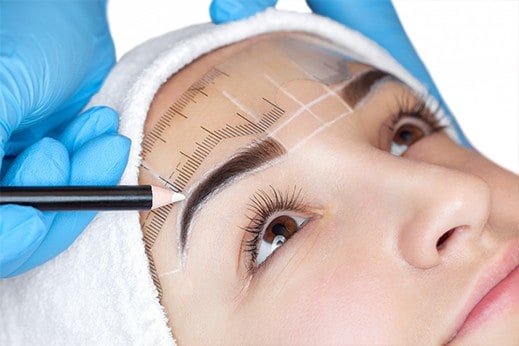Hair loss is a common concern that affects millions of people worldwide. As a cosmetologist, you have a unique opportunity to help your clients maintain healthy hair and prevent hair loss through proper care and early intervention. This article aims to educate licensed professionals on effective strategies for hair loss prevention.
Recommended course: Preventing Hair Loss
Understanding hair loss
Understanding hair loss is crucial for cosmetologists. It enables them to provide informed advice, personalized care, and early intervention for their clients. Knowledge of the different types of hair loss and their underlying causes equips cosmetologists to better address their clients’ concerns and prevent further hair damage.
Androgenic Alopecia
Androgenic alopecia, also known as male or female pattern baldness, is the most common form of hair loss. It is characterized by a predictable pattern of hair thinning:
- In men: Hair loss typically starts at the hairline, moving back to form an “M” shape, and progresses to thinning at the crown.
- In women: Hair thinning is generally more diffuse, often starting with a widening part and noticeable thinning at the crown.
Telogen Effluvium
Telogen effluvium occurs when there is a significant change in the number of hair follicles in the growth phase. This condition often results in temporary hair shedding and can be triggered by various factors:
- Stress: Emotional or physical stress can push hair follicles into the shedding phase.
- Hormonal changes: Events like childbirth, menopause, or discontinuing birth control pills can disrupt the hair growth cycle.
- Illness or surgery: Severe illness, surgery, or extreme weight loss can shock the body, leading to hair shedding.
Alopecia Areata
Alopecia areata is an autoimmune disorder where the immune system mistakenly attacks hair follicles, leading to hair loss. This condition can manifest in different ways
- Patchy hair loss: Sudden, round patches of hair loss on the scalp or other parts of the body.
- Total hair loss: In more severe cases, it can lead to total scalp hair loss (alopecia totalis) or complete body hair loss (alopecia universalis).
Recommended course: Hair Loss: Including Traction Alopecia Cause and Cure
Common causes of hair loss
Hair loss can result from various factors, including:
- Genetic factors. Genetics plays a key role in hair loss. If the client has a family history of baldness or thinning hair, they’re more likely to experience similar patterns of hair loss.
- Hormonal changes. Hormonal imbalances can profoundly impact hair health. Conditions such as pregnancy, menopause, thyroid disorders, and polycystic ovary syndrome (PCOS) can disrupt normal hair growth cycles, leading to hair loss.
- Nutritional deficiencies. A balanced diet is essential for maintaining healthy hair. Deficiencies in critical nutrients like iron, biotin, zinc, and protein can weaken hair structure and cause hair to thin and fall out. For instance:
- Iron is essential for oxygen transport to hair follicles.
- Biotin is vital for keratin production, the protein that makes up hair.
- Protein is the fundamental building block of hair, necessary for growth and strength.
- Stress and lifestyle factors. High levels of stress, poor diet, lack of exercise, and inadequate sleep can all contribute to hair loss. Stress can trigger conditions like telogen effluvium, leading to noticeable hair shedding. Additionally, unhealthy habits such as smoking and excessive alcohol consumption can negatively impact hair health.
- Medical conditions and medications. Certain medical conditions, such as lupus and diabetes, and medications, including chemotherapy drugs and blood thinners, can cause hair loss as a side effect. It’s important to consider these factors when assessing a client’s hair loss situation.
How cosmetologists can help clients manage and prevent hair loss
Cosmetologists can help clients manage and prevent hair loss through a combination of education, personalized care, and professional treatments. Here are several strategies and approaches that cosmetologists can employ to support their clients with hair loss concerns.
Initial client consultation. A thorough initial consultation is essential for understanding the client’s hair loss issues. During this consultation, cosmetologists should ask about the client’s hair care routines, medical history, family history of hair loss, lifestyle, and dietary habits. Use visual and tactile techniques to examine the condition of the scalp and hair. Understand the client’s specific concerns, experiences, and goals regarding hair health.
Scalp and hair analysis. Using professional tools and techniques, cosmetologists can conduct detailed scalp and hair analysis to identify underlying issues. This may include:
- Magnifying scalp scopes: To detect scalp conditions such as dandruff, psoriasis, or folliculitis.
- Hair density measurement tools: To assess hair thickness and density, helping to track progress over time.
Identifying red flags. Cosmetologists should be able to identify signs that may require further medical attention, such as sudden or severe hair loss, scalp infections, or other unusual symptoms. In such cases, recommending a visit to a dermatologist or trichologist is a must.
Cosmetological treatments for hair loss
A variety of treatments can help prevent hair loss, improve scalp health, and stimulate hair growth.
- Scalp massages are a simple yet effective treatment that can improve blood circulation to the hair follicles. This promotes relaxation and reduces stress, which often contributes to hair loss. Enhanced blood flow delivers more nutrients and oxygen to the hair follicles, potentially stimulating hair growth. Scalp massages can be performed manually using fingertips to knead and rub the scalp in circular motions.
- Low-level laser therapy (LLLT) is a non-invasive treatment that uses red light wavelengths to stimulate hair follicles and promote hair growth. This therapy can increase cellular activity within the hair follicles. In-salon treatments with professional-grade laser devices can be combined with other hair treatments for a comprehensive approach. LLLT is FDA-approved for treating hereditary hair loss in both men and women, but regular use over several months is usually required to see prominent results.
- Microneedling involves creating tiny punctures in the scalp using fine needles, stimulating collagen production, and enhancing the absorption of topical treatments. This process can improve blood circulation to the scalp and encourage the activation of dormant hair follicles. Handheld devices like derma rollers or automated pens with adjustable needle depths can be used for this treatment. However, this procedure should only be performed by trained licensed professionals to avoid potential side effects like infection or scarring.
- Topical treatments can nourish the scalp, strengthen hair follicles, and stimulate hair growth. Cosmetologists can recommend or apply these treatments during salon visits. Minoxidil, an over-the-counter medication, can be applied directly to the scalp to promote hair growth and slow hair loss. Products containing DHT blockers, such as saw palmetto or pumpkin seed oil, can inhibit dihydrotestosterone, a hormone linked to hair loss.
Conclusion
For clients experiencing hair loss, cosmetologists can offer immediate cosmetic solutions like wigs and extensions. Hair extensions, including methods like tape-ins, clip-ins, or micro-link extensions, can add volume and length. High-quality wigs and hairpieces provide a natural look, and cosmetologists can customize them to match the client’s style. Educating clients on the proper care and maintenance of extensions and wigs is essential to ensure longevity and a natural appearance.
By offering these advanced treatments and personalized care plans cosmetologists can improve their clients’ hair health and confidence. Continuing education and collaboration with healthcare providers further enhance the effectiveness of these treatments, ensuring that clients receive the best possible care.






